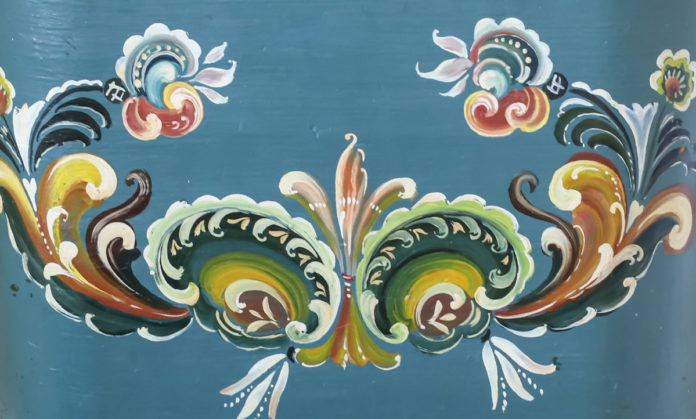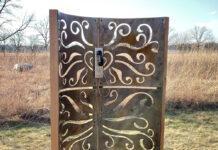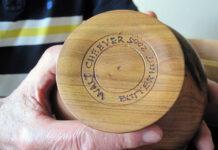Joan Hurry, Mary Sherwood and Nancy Sullivan and others like them have kept a Norwegian folk art alive locally for nearly 50 years.
They have painted a variety of items, from earrings to quilt racks, with the special images that represent the art form rosemåling. The three women have attended classes, held group rosemåling sessions and received awards for their artistry. They have given away their work to raise funds for churches, sold their work nationally and decorated their homes.
The art of rosemåling, which means “rose painting,” originated in Norway when artists were hired to decorate the inside of churches in a climate not hospitable to stained glass windows. People who attended these churches also saw the artwork as a way of decorating their homes, including walls and cupboards, as well as small household items such as bread boards.
They began to adopt and vary the themes and brush strokes. Thus, as the art of rosemåling grew in the valleys of Norway, a variety of styles developed because people were not prone to traversing a mountain top to share their local rosemåling style with neighbors in the next valley. Nevertheless, the image of a rose is inherent in all rosemåling , and each element—flower, leaf, scroll—that is painted on any piece can be traced back to the “root,” which seldom appears on the painted piece but simply is understood as being there.
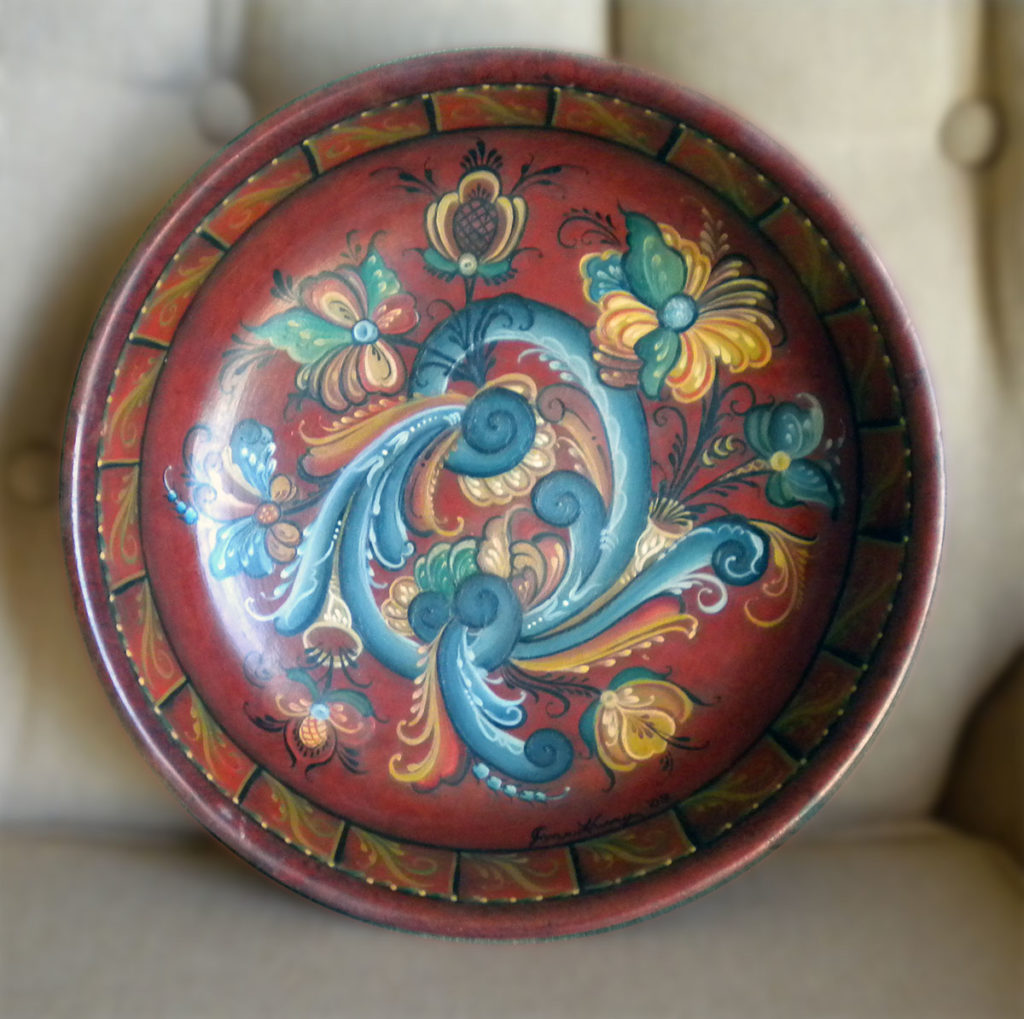
Norwegian families who immigrated to the United States brought the art with them, decorating their new homes with it. Rosemåling became popular here in the 1930s, when the neighbor of a sign painter from Norway noticed the man’s work and began to learn it.
A resurgence of interest in rosemåling in America began in the 1970s, when women like Hurry, Sherwood and Sullivan took up the art. They attended classes at what is now South Central College in North Mankato and took lessons from local experts, including the late Sister Merceda of the School Sisters of Notre Dame. The women also began attending classes at Vesterheim Folk Art School in Decorah, Iowa, where some of the visiting instructors come from Norway and a museum displays Norwegian artwork. As students, Sherwood, Hurry and Sullivan entered their rosemåled pieces in competitions, occasionally receiving awards for their creativity.
Mary Sherwood
Sherwood’s work may be familiar to readers who attended the annual fall bazaar at Bethlehem Lutheran Church in Mankato over the years. Sherwood regularly donated some of her work to the bazaar and demonstrated the art with paint and a brush for onlookers. One of Sherwood’s pieces, a violin decorated with rosemåling, brought $500 into the church’s coffers. She also demonstrated rosemåling at other bazaars, producing mostly plates, necklaces, pins, and cards. Perhaps it’s no coincidence that it was at a church bazaar that Sherwood first encountered rosemåling in 1974—a case of love at first sight.
My husband, Bruce, made woodenware for me, and I painted 2,000 pieces a year, which I sold at mall shows and various gift shops throughout the country.Mary Sherwood
“That was the first time I’d ever seen rosemåling,” Sherwood said. “A woman was demonstrating it, and I was immediately addicted. I began taking classes at the technical school from Daphrone Ogee, who let me take a piece of her work home to study. I also took classes at the Vesterheim Folk Art School in Decorah, some lasting a week. My husband, Bruce, made woodenware for me, and I painted 2,000 pieces a year, which I sold at mall shows and various gift shops throughout the country. I have my own style, a combination of rogaland and telemark.”
Another local teacher of rosemåling was Grace Hewitt. (Like Sister Merceda, both Ogee and Hewitt are now deceased.)
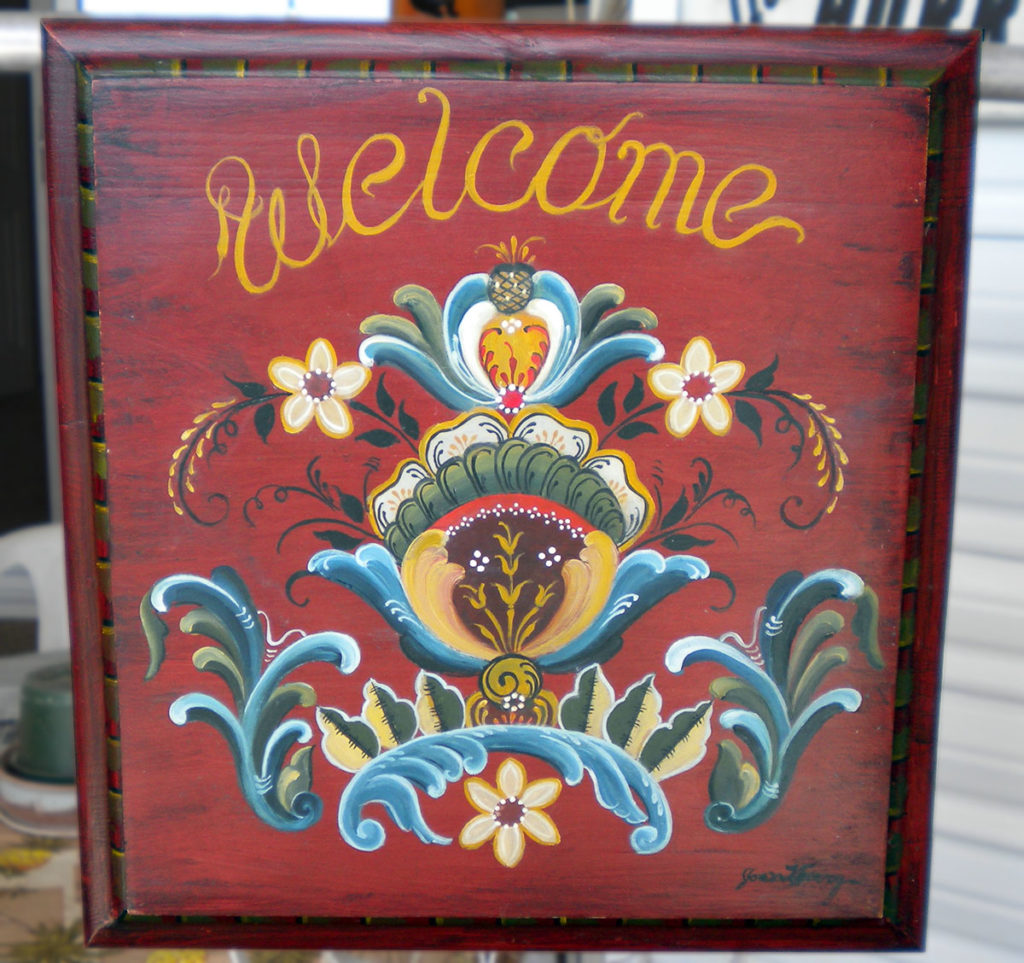
Joan Hurry
Hurry’s interest in rosemåling was sparked in 1975, when one of her sewing students at the technical school asked about the Norwegian art. As a result of the inquiry, the school scheduled Ogee to teach a class that Hurry and Sherwood attended. Hurry said, “I began rosemåling every summer because that’s when I had time. I don’t take on requests, but I’ve sold nearly all of my completed pieces at shows and at a few museum gift shops. My favorite piece is a bowl I painted in Rogaland style.”
I began rosemåling every summer because that’s when I had time. I don’t take on requests, but I’ve sold nearly all of my completed pieces at shows and at a few museum gift shops. My favorite piece is a bowl I painted in Rogaland style.Joan Hurry
For more than 35 years, Hurry has shown her work at various shows throughout the Midwest, garnering awards and ribbons. In the late ‘80s, her entry at the Blue Earth County Fair was judged Grand Champion, but Hurry chose not to compete at the Minnesota State Fair.
Some of Hurry’s rosemåling work is on display at the Mayo Clinic in Mankato and in the restored Terrace Mill in Terrace, Minn. Her next rosemåling project? “I’m working on a sleigh that will accommodate a large doll,” she said.
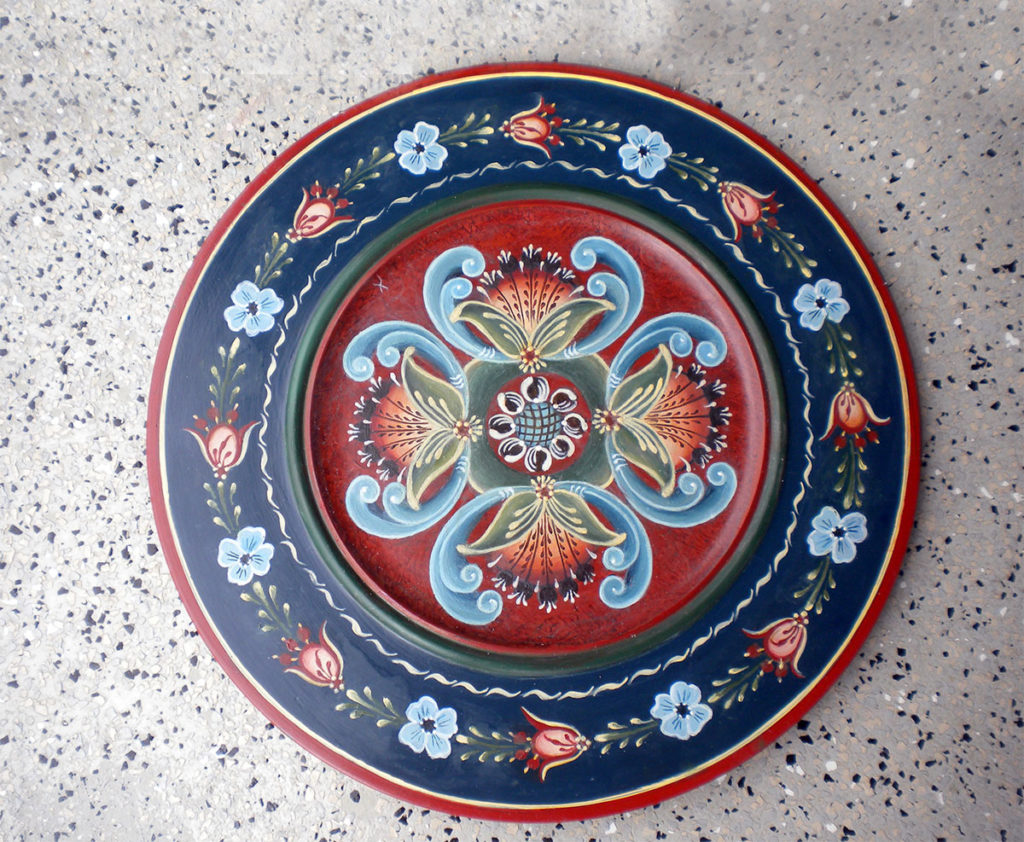
Nancy Sullivan
Sullivan originally heard about rosemåling from the mother of one of the Camp Fire girls who was in the troop Sullivan led. So, when she ran across a used book about rosemåling, while browsing at a craft supply shop, the book caught her interest. She explained, “I just wanted something different in experience. The only things I had done before was designing clothes for my paper dolls when I was in junior high, and later, when I took sweatshirt painting classes with a cousin.”
It took Sullivan a while to realize that, like Sherwood and Hurry, she is an artist. She, too, began to attend classes at the Vesterheim Folk Art School, where she also bought supplies. She said, “I had to make a lot of mistakes in learning because I had absolutely no knowledge about painting, not even how to clean a brush properly.”
I had to make a lot of mistakes in learning because I had absolutely no knowledge about painting, not even how to clean a brush properly.Nancy Sullivan
Although people may think of rosemåling as decoration for flat surfaces, Sullivan’s work includes earrings and pins, as well as large pieces like the quilt rack that she painted in Rogaland style. She currently is painting telemark style on a milk can as a gift for her daughter.
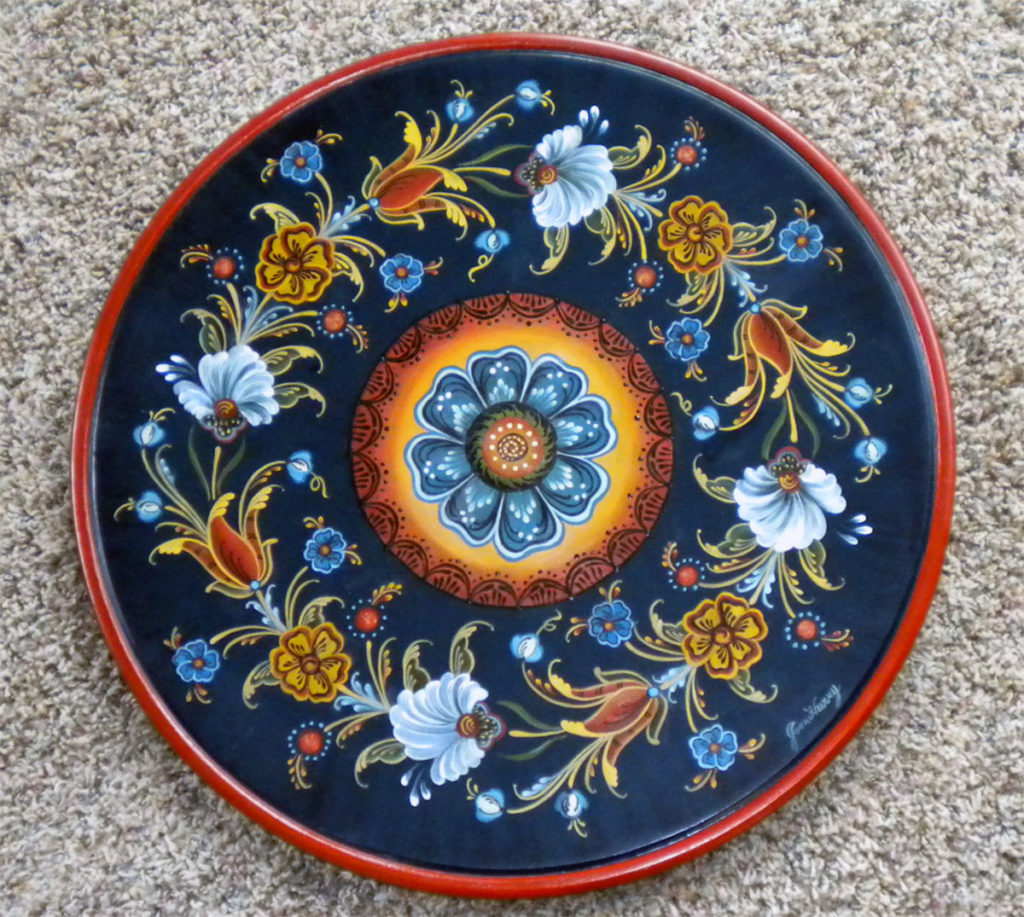
After years of rosemåling experience, Sullivan took on a student about 10 years ago—a woman who stopped by Sullivan’s garage sale, saw some of Sullivan’s rosemaled pieces and said, “I wish I’d had time to learn this when I first saw it in the 1980s, but I was too busy with my job and my family.” Sullivan replied, “If you’ll come here to paint with me, I’ll teach you about rosemåling.” Over the past decade, the teacher and the student have spent many afternoons in Sullivan’s basement workshop, developing a friendship as well as the student’s rosemåling techniques and knowledge. They use a variety of rosemåling pattern books, but they also freehand designs, especially on greeting cards.

